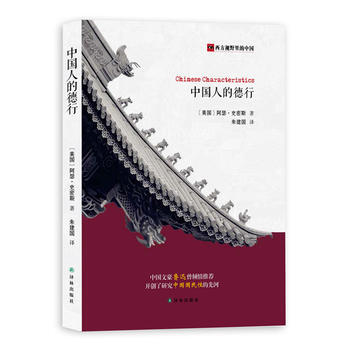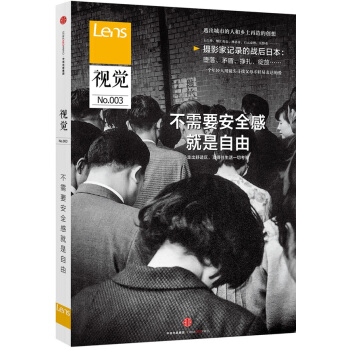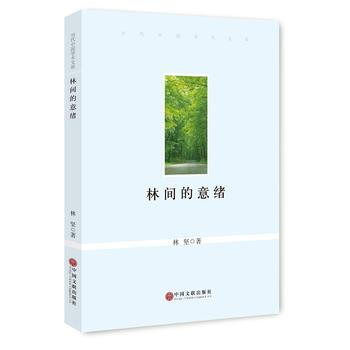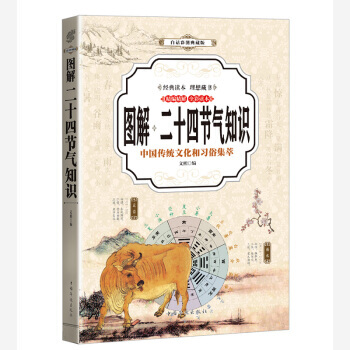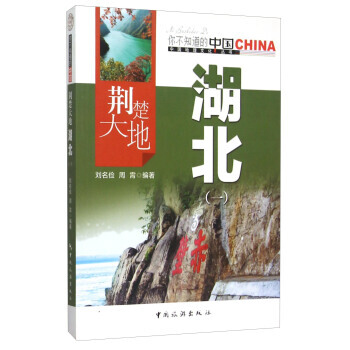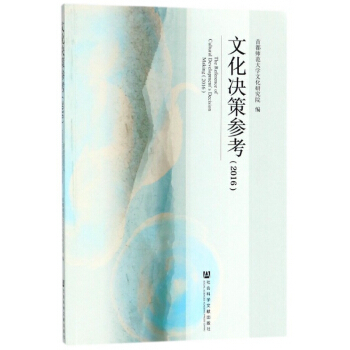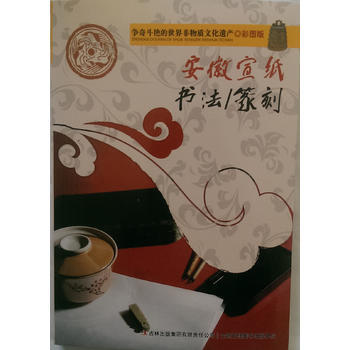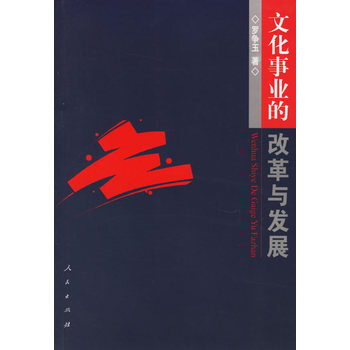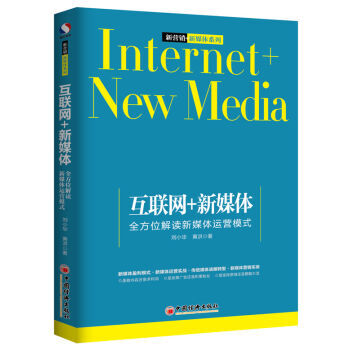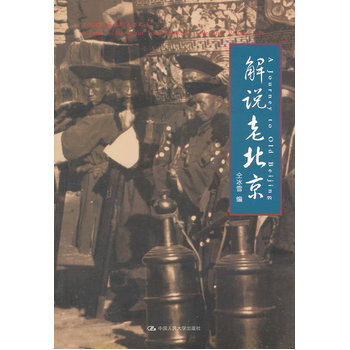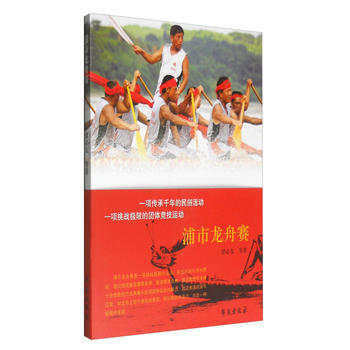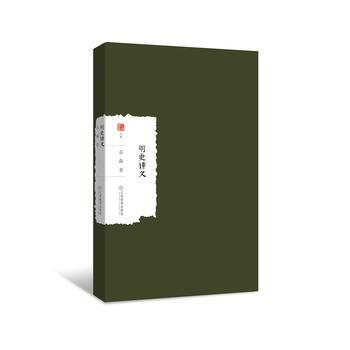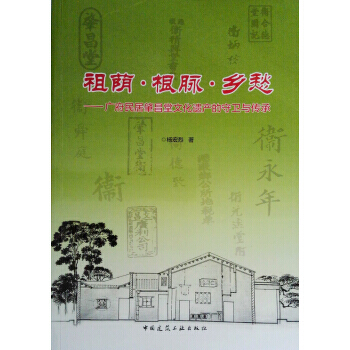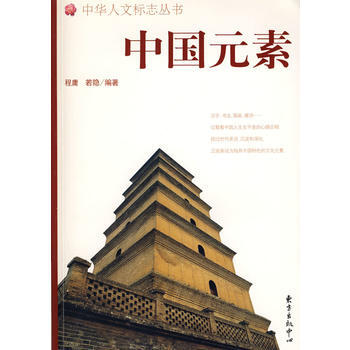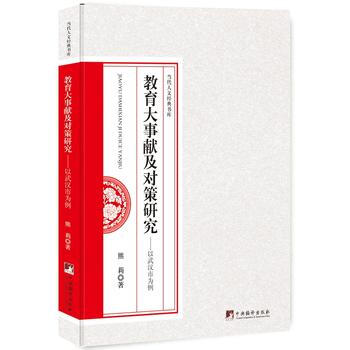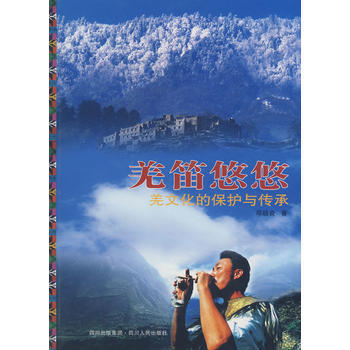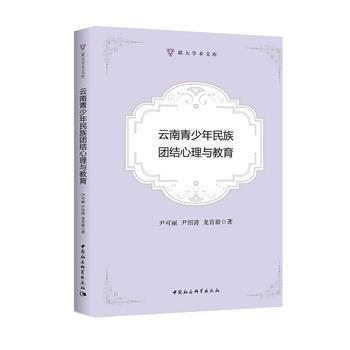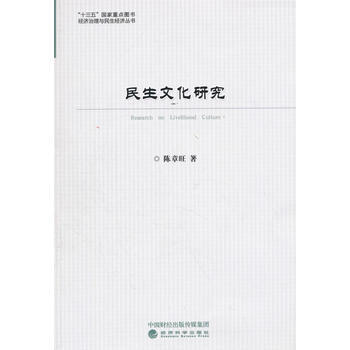

具体描述
内容介绍
&xbsp; 本书从文体的角度切入,分六章具体分析研究先唐各类哀祭文体的源流、演变、文体特征的变化,以及哀祭文产生和流变的文化背景和原因。绪论主要是对本文所研究的哀祭文体对象进行界定,*出采用“哀祭文”的依据,并*出选取诔、祭文、吊文、哀辞、哀策等文体以及丧葬文书作为研究对象的原因。
目录
目录 绪论 1、古代文体分类 二、古人对哀祭文体的认识和分类 三、哀祭文体研究现状 四、研究范围和方* *1章古代丧祭思想 *1节儒家的死亡观念 1、早期社会的死亡观念 二、儒家的生命意识
目录
&xbsp;
&xbsp;
&xbsp;
绪论
1、古代文体分类
二、古人对哀祭文体的认识和分类
三、哀祭文体研究现状
四、研究范围和方*
&xbsp;
*1章古代丧祭思想
*1节儒家的死亡观念
1、早期社会的死亡观念
二、儒家的生命意识
三、“三年之丧”的理论与实践
四、儒家对死亡的*越
*二节道家和道教的死亡观念
1、老子的死亡观念与顺应生死的“道”
二、庄子的死亡观念与“生死齐1”
三、道教理论中的“重生恶死”观念
四、道家和道教对死亡的*越
第三节佛教的死亡观念
1、佛教的“死亡之苦”
二、佛教的死亡观念
三、佛教对死亡的*越
第四节结语
&xbsp;
*二章古代丧祭仪式
*1节古代丧祭礼仪
1、儒家丧祭礼仪
二、道教丧祭礼仪
三、佛教丧祭礼仪
*二节丧祭仪式的意义
1、“过渡礼仪”与“阈限”理论
二、丧葬仪式的象征意义
三、丧祭礼仪的文化功能
三、仪式与文体的产生
第三节结语
&xbsp;
第三章诔文研究
*1节诔文溯源
1、诔之释义
二、诔与谥制
三、诔的礼制规定
四、诔文体制溯源
*二节诔文流变
1、内容的变化
二、抒情方式的变化
三、诔主身份的变化
四、体制的变化
五、流变的原因
第三节诔文的衰落
1、谥议与行状对诔文作谥职能的取代
二、碑志文对诔文述德职能的取代
三、祭文和哀辞对诔文写哀职能的取代
四、佛教丧葬愿文对诔文祈愿职能的取代
第四节结语
&xbsp;
第四章祭文吊文研究
*1节祭文溯源
1、祭之释义
二、祭与祝官
三、祭的礼制规定
四、祭文体制溯源
*二节祭文流变
1、体制的仪式性特征
二、内容的变化
三、祭主身份的变化
四、语体形式的变化
第三节吊文溯源
1、吊之释义
二、吊与凶礼
三、吊与宾礼
四、吊文体制溯源
第四节吊文流变
1、吊文的文体定型
二、内容的变化
三、体式的变化
四、体制的变化
第五节结语
&xbsp;
第五章哀辞、哀策、挽歌研究
*1节哀辞溯源
1、哀辞释义
二、哀辞溯源
*二节哀辞流变
1、哀辞的文体定型
二、哀辞的体制特征
三、哀主身份的变化
四、哀辞抒情方式的变化
第三节哀策溯源
1、哀策释义
二、哀策文体溯源和礼制规定
第四节哀策流变
1、哀策的文体定型
二、哀策的文体结构与体制特征
三、哀策的文体流变规律
第五节挽歌溯源
1、挽歌释义
二、挽歌与送终之礼
三、挽歌仪式的表演者——挽郎
四、“非礼”的助乐挽歌
第六节挽歌诗流变
1、挽歌与挽歌诗
二、葬礼挽歌诗和拟挽歌诗
三、献赠挽歌诗
四、挽歌诗的文体流变规律
第七节结语
&xbsp;
第六章丧葬文书研究
*1节买地券研究
1、买地券的产生
1、买地券的仪式性特征
三、买地券的体制
四、买地券的内容
*二节镇墓文研究
1、镇墓文的产生
二、镇墓文的仪式性特征
三、镇墓文的体制与内容
第三节告地策研究
1、告地策的产生
二、告地策的内容
三、告地策与通关之“传”
第四节丧葬文书与道教思想
1、丧葬文书与道教神仙谱系
二、丧葬文书中的解除内容
三、丧葬文书中的道教符箓内容
第五节结语
&xbsp;
参考文献
致谢
&xbsp;
&xbsp;
绪论
显示全部信息在线试读
1、古代文体分类 中guo古代关于文体方面的研究和探讨渊源已久,1直受到历代学者们的重视。醉早的文体辨析思想可以上溯到《诗经》,风、雅、颂就是按照某种标准试图对诗歌进行分类的。《尚书》中的文章分为典、谟、训、诰、誓、命等名目,也是1种对文辞的分门列类。《左传》更是直接载有多种古代文体名目,如命、誓、盟、祷、谏、让、书、对等。先秦其他典籍中也保留有1些文体的名目,如《周礼》中的“大祝作六辞”,有祠、命、诰、会、祷、诔六种文体类型,《周易》中的卦论和爻辞中也保留了论、说、辞、序等文体雏形。考察先秦时期出现的文体分类,可以看出*时的文体辨析不是以辨析文体为出发点的专门分门别类,而是出于实际政治生活的需要而自发产生的,具有很强的功利性。早期社会人们在生产和生活中生成大量具有实用性的社会行为,而相伴而生的言辞是作为社会功能行为的组成部分出现的,随着人们对语言的使用技巧逐渐增强,包容着言辞的大量社会功能行为在不同历史时期阶段的行为意义也发生了转化,文体观念逐渐孕育。 真正kai始有意识地对文体进行辨析的是刘向的《别录》、刘歆的《七略》和班固的《汉书·艺文志》。虽然刘向、刘歆父子的原作已经亡佚,但根据《汉书?艺文志》中关于《七略》的概况,还是可以看出“部次条别,将以辨章学术,考镜源流”〔清〕章学诚著,叶瑛校注:《文史通义校注》,北京:中华书局,1985年版,第945页。的分类原则。《诗赋略》中分诗赋为五种,其中赋为四家,分为屈原赋类、陆贾赋类、孙卿赋类、客主赋类;歌诗为1家,共五种。他们的文献分类观念标志着中guo古代文体分类意识的萌生。
1、古代文体分类
中guo古代关于文体方面的研究和探讨渊源已久,1直受到历代学者们的重视。醉早的文体辨析思想可以上溯到《诗经》,风、雅、颂就是按照某种标准试图对诗歌进行分类的。《尚书》中的文章分为典、谟、训、诰、誓、命等名目,也是1种对文辞的分门列类。《左传》更是直接载有多种古代文体名目,如命、誓、盟、祷、谏、让、书、对等。先秦其他典籍中也保留有1些文体的名目,如《周礼》中的“大祝作六辞”,有祠、命、诰、会、祷、诔六种文体类型,《周易》中的卦论和爻辞中也保留了论、说、辞、序等文体雏形。考察先秦时期出现的文体分类,可以看出*时的文体辨析不是以辨析文体为出发点的专门分门别类,而是出于实际政治生活的需要而自发产生的,具有很强的功利性。早期社会人们在生产和生活中生成大量具有实用性的社会行为,而相伴而生的言辞是作为社会功能行为的组成部分出现的,随着人们对语言的使用技巧逐渐增强,包容着言辞的大量社会功能行为在不同历史时期阶段的行为意义也发生了转化,文体观念逐渐孕育。
真正kai始有意识地对文体进行辨析的是刘向的《别录》、刘歆的《七略》和班固的《汉书·艺文志》。虽然刘向、刘歆父子的原作已经亡佚,但根据《汉书?艺文志》中关于《七略》的概况,还是可以看出“部次条别,将以辨章学术,考镜源流”〔清〕章学诚著,叶瑛校注:《文史通义校注》,北京:中华书局,1985年版,第945页。的分类原则。《诗赋略》中分诗赋为五种,其中赋为四家,分为屈原赋类、陆贾赋类、孙卿赋类、客主赋类;歌诗为1家,共五种。他们的文献分类观念标志着中guo古代文体分类意识的萌生。
研究者们普遍认为,蔡邕的《du断》是醉早的文体学研究专著。刘跃进:“从现存资料来看,有关文体研究的论著,*以蔡邕《du断》为醉早。”参见《〈du断〉与秦汉文体研究》《文学遗产》2002(5);张方:“以此为准,后汉蔡邕或可成为中guo古代文体论的创导之人。”参见《中guo诗学的基本观念》,北京:东方出版社,1999年版,*142页。《du断》始见于《后汉书?蔡邕传》,其中所列的文体分为皇帝发布的诏书和大臣呈递的奏章两种,皆是处理朝政大事时使用的文类,共有策书、制书、诏书、戒书、章、奏、表、驳议八种文体,“采qiax古及汉以来典章制度、品式称谓、考证辨释、反数百事”〔宋〕waxg应麟:《玉嗨》《景印文渊阁四库全书》本卷51。,11说明其体式和用途。与蔡邕同时代的刘熙编著的《释名》,也是1部考释事物名称兼及文体名实辨析的著作,《释名序》云:“夫名之于实,各有义类,百姓日称而不知其所以之意,故撰天地、阴阳、四时、邦guo、都鄙、车服、丧纪,下及民庶应用之器,论叙指归,谓之《释名》。”〔东汉〕刘熙撰,〔清〕waxg先谦补:《释名疏证补》,北京:中华书局,2008年版,序言*1页。《释名》卷6《释书契第shijiu》和《释典艺*二十》中,训释了奏、檄、谒、符、传、券、策书、启、书、告、表、诗、赋、诏书、论、赞、铭、碑等文体,其中涉及的对文体名称及其内涵、外延的考辨,TI现出鲜明的辨体意识,但是,“这种辨体意识更多地指向遵循文体功能进行文章写作,即如何因体作文或作文得体,而不是指向以篇归类的类别区分,因此尚属于文体形态学的范畴”郭英德:《中guo古代文体学论稿》,北京:北京大学出版社,2005年版,第77页。
显示全部信息用户评价
这本书的封面设计就透着一股子沉静而肃穆的气息,灰褐色的底色,搭配上素雅的字体,隐约能感受到其探讨的主题绝非轻松愉快。我一直对古代文学中的情感表达方式很感兴趣,尤其是那些寄托在文字中的哀思与祭奠,总觉得能触碰到历史深处最柔软的部分。市面上关于唐诗宋词的研究汗牛充栋,但专注于“哀祭文体”这一细分领域的,却相对少见,这让我对这本书的价值充满了期待。 我很好奇作者是如何界定“哀祭文体”的,它是否涵盖了从祭文、诔文到墓志铭、挽歌等多种文体?书中会如何剖析这些文体在结构、语言、情感逻辑上的共性与差异?我尤其关心作者会不会举出具体的文学作品作为例证,比如屈原的《离骚》、曹操的《短歌行》中的某些段落,亦或是唐代某些知名文人的祭文,来具体分析其遣词造句的精妙之处,以及如何通过文字传递对逝者的追思与不舍。 Furthermore, I'm intrigued by the potential cultural and historical context the book might explore. The Tang Dynasty was a period of immense cultural flourishing and profound social change. How did the prevailing religious beliefs, philosophical outlooks, and societal norms of the Tang era influence the development and expression of lamentation and memorial texts? Did Buddhism, Taoism, or Confucianism play a significant role in shaping the sentiments and stylistic conventions of these writings? I'm eager to see if the author delves into how these broader cultural currents manifested in the specific literary forms of sacrificial texts, offering insights into the collective consciousness and emotional landscape of the time. This book's title, "Studies on the Lamentation and Sacrificial Literary Genre of the Tang Dynasty," immediately sparks a sense of intellectual curiosity. The Tang Dynasty is renowned for its poetic achievements, but the idea of a dedicated study on its lamentation and sacrificial writings opens up a less-explored avenue of research. I imagine the author would meticulously examine the evolution of these literary forms, tracing their origins and charting their development throughout the Tang period. It would be fascinating to learn about the ritualistic and social functions of these texts. Were they primarily for private mourning, or did they hold a public and ceremonial significance? Understanding the contexts in which these writings were composed and performed – be it at funerals, ancestral rites, or in memory of historical figures – would offer a richer appreciation of their purpose and impact. I'm particularly keen on any discussion concerning the role of these texts in shaping collective memory and transmitting cultural values across generations. The nuanced ways in which sorrow, respect, and remembrance were articulated within these specific literary constraints are what truly draw me in.
评分初次看到《先唐哀祭文体研究》这个书名,我的脑海中立刻浮现出中国古代那种特有的、在庄严肃穆的祭祀仪式中吟咏的、寄托着生者对逝者无限哀思的文字。这类文体,不像诗歌那样直抒胸臆,也不像散文那样自由奔放,它似乎有一种独特的、内敛而又深沉的表达方式,尤其是在“先唐”这个历史节点上,其演变的脉络与特质,想必是颇具研究价值的。 我很想知道,书中会对“哀祭文体”进行怎样的分类和界定?它是否会涵盖那些我们熟悉的祭文、诔文、碑铭,甚至是某些乐府诗中带有祭祀意味的作品?我对作者是如何梳理这些文体在先唐时期的发展脉络尤为感兴趣,比如,它们是否受到当时社会政治环境、宗教信仰、哲学思想等方面的深刻影响?书中会不会对一些具有代表性的先唐哀祭文作品进行细致的文本分析,比如,它们在语言风格、情感表达、修辞手法上有什么独到之处? This book's title, "Studies on the Lamentation and Sacrificial Literary Genre of the Tang Dynasty," instantly conveys a sense of profound academic inquiry. The Tang Dynasty, a golden age of Chinese literature, is celebrated for its poetic and prose achievements. However, focusing on the specific genre of lamentation and sacrificial texts offers a unique lens through which to examine the emotional and spiritual landscape of that era. I am particularly intrigued by how the author might explore the interplay between ritual and literary expression within this genre. Were these texts purely functional, serving a specific purpose in funerary rites or ancestral ceremonies, or did they also possess significant artistic merit? The potential for a deep dive into the aesthetic qualities, the rhetorical strategies, and the emotional resonance of these writings is highly appealing. The prospect of uncovering previously underappreciated literary gems within this genre is also a significant draw. Often, the most celebrated works overshadow other equally valuable contributions to the literary canon. I am hopeful that this book will shed light on these less-discussed but nonetheless important pieces of Tang Dynasty literature, enriching our understanding of the period's diverse literary output.
评分这本书的装帧简约而典雅,与书名《先唐哀祭文体研究》所透露出的学术气质相得益彰,让人在翻开之前就对其内容充满了审慎的期待。作为一名对中国古代文学,特别是其中那些蕴含着深沉情感的作品情有独钟的读者,我一直认为,哀祭文体作为一种独特的文学样式,承载着古人对于生命、死亡以及逝者深深的眷恋与追怀,是理解那个时代人们精神世界的一扇重要窗口。 我非常期待书中会如何界定“哀祭文体”的范畴,以及它在先唐时期是如何逐步形成和发展的。作者是否会深入分析这些文体在文本结构上的特点,比如常采用的起兴、叙事、抒情、议论等手法?更重要的是,我想知道书中是如何解读这些文体中蕴含的丰富情感的。是单纯的悲伤与哀痛,还是包含了对逝者品德的赞颂,对人生无常的感慨,以及对未来希望的寄托? Furthermore, the very notion of "pre-Tang" lamentation and sacrificial texts suggests a focus on a foundational period. I'm eager to discover what unique characteristics these early forms might possess compared to later developments. Does the book explore the influence of earlier traditions, perhaps from the Han Dynasty or even earlier, on the nascent Tang lamentation and sacrificial literature? Understanding these roots would provide a crucial context for appreciating the originality and innovation of Tang writers in this genre. The meticulous research that must have gone into such a specialized study is something I deeply admire. I imagine the author has consulted a vast array of historical texts and scholarly works, painstakingly piecing together the evolution and nuances of these literary forms. It is this dedication to uncovering and illuminating often-overlooked aspects of literary history that makes a book like this so valuable.
评分《先唐哀祭文体研究》这个书名,本身就带有一种历史的厚重感和学术的严谨性,让我对这本书充满了探究的兴趣。我一直认为,文学不仅仅是记录和表达,更是一种情感的传承和文化的载体,而哀祭文体,作为一种特殊的情感表达方式,尤其能够触及到我们内心深处最柔软的部分,尤其是先唐时期,那个承前启后的重要阶段,其哀祭文体的演变和发展,定然蕴含着丰富的历史信息和文化意蕴。 我非常好奇,作者将如何界定“哀祭文体”这一概念,是否会包含大量的古代祭词、诔文、碑铭等文体?书中是否会深入分析这些文体在形式上的演变,例如,从早期的朴素到后来的华美,在语言风格、句式结构、韵律节奏等方面会有哪些显著的变化?我特别希望,作者能够选取一些具有代表性的先唐哀祭文作品,进行深入的文本解读,分析其情感的内涵,比如,在哀悼中如何体现对逝者生平的追忆,对品德的歌颂,以及对生命哲思的升华。 This book's title, "Studies on the Lamentation and Sacrificial Literary Genre of the Tang Dynasty," immediately signals a deep dive into a nuanced and often overlooked area of classical Chinese literature. The Tang Dynasty is a period rich with literary innovation, and focusing on the lamentation and sacrificial texts allows for an exploration of a particular facet of human experience and expression during that era. I am particularly interested in how the author might connect these literary forms to the broader social and political climate of the Tang Dynasty. Were there specific historical events or societal changes that influenced the content and style of these texts? Understanding the context in which they were produced would undoubtedly deepen our appreciation of their significance and impact. The prospect of encountering diverse perspectives on grief, remembrance, and the afterlife within these ancient texts is highly enticing. Each lamentation and sacrificial piece offers a unique window into the emotional world of its author and the cultural understanding of mortality during the Tang period. This book promises to be an illuminating journey into the heart of a rich literary tradition.
评分《先唐哀祭文体研究》这个书名,一下子就抓住了我这个对中国古代文学,尤其是那些承载着深沉情感的作品的关注点。哀祭文体,总让人联想到庄重、肃穆,以及字里行间流淌着的对逝者的无限哀思和追忆。在先唐这样一个历史时期,这种文体是如何形成的,又经历了怎样的发展,这本身就是一个极具吸引力的研究课题。 我非常想知道,这本书在界定“哀祭文体”时,会包含哪些具体的文体类型?是狭义的祭文、诔文,还是会更广泛地涵盖墓志铭、哀词、挽歌等?更让我感到好奇的是,书中是否会细致地分析这些文体在先唐时期的语言风格特点,比如,它们在遣词造句、章法结构、修辞运用等方面,与其他文体有何不同?我很期待书中能够通过对一些经典作品的深入剖析,来展现先唐哀祭文体如何通过文字的力量,传递出复杂而深邃的情感,以及其中所蕴含的文化价值观。 This book's title, "Studies on the Lamentation and Sacrificial Literary Genre of the Tang Dynasty," immediately piques my interest. The Tang Dynasty is a cornerstone of Chinese literary history, and focusing on lamentation and sacrificial texts offers a unique opportunity to explore the expressions of grief, remembrance, and respect during that vibrant period. I am eager to learn about the specific characteristics that define this literary genre within the Tang context. What were the typical thematic concerns, emotional registers, and stylistic conventions that distinguished these texts? Did they adhere to strict formal requirements, or was there considerable room for individual expression? Furthermore, I would be fascinated to see how the author discusses the broader cultural significance of these texts. Were they primarily private expressions of sorrow, or did they play a more public role in society, perhaps in rituals, state ceremonies, or as historical commemorations? The potential to understand the emotional and cultural fabric of the Tang Dynasty through its lamentation and sacrificial literature is what makes this book so compelling.
相关图书
本站所有内容均为互联网搜索引擎提供的公开搜索信息,本站不存储任何数据与内容,任何内容与数据均与本站无关,如有需要请联系相关搜索引擎包括但不限于百度,google,bing,sogou 等
© 2025 book.coffeedeals.club All Rights Reserved. 静流书站 版权所有

